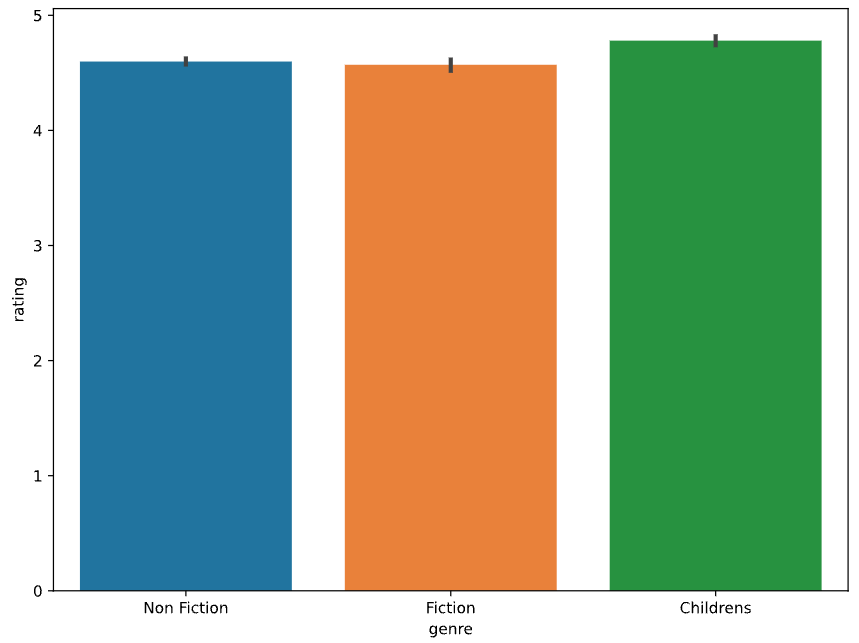Data summarization
Exploratory Data Analysis in Python

Izzy Weber
Curriculum Manager, DataCamp
Exploring groups of data
.groupby()groups data by category- Aggregating function indicates how to summarize grouped data
books[["genre", "rating", "year"]].groupby("genre").mean()
| genre | rating | year |
|-------------|----------|-------------|
| Childrens | 4.780000 | 2015.075000 |
| Fiction | 4.570229 | 2013.022901 |
| Non Fiction | 4.598324 | 2013.513966 |
Aggregating functions
- Sum:
.sum() - Count:
.count() - Minimum:
.min() - Maximum:
.max() - Variance:
.var() - Standard deviation:
.std()
Aggregating ungrouped data
.agg()applies aggregating functions across a DataFrame
books[["rating", "year"]].agg(["mean", "std"])
| | rating | year |
|------|----------|-------------|
| mean | 4.608571 | 2013.508571 |
| std | 0.226941 | 3.28471 |
Specifying aggregations for columns
books.agg({"rating": ["mean", "std"], "year": ["median"]})
| | rating | year |
|--------|----------|--------|
| mean | 4.608571 | NaN |
| std | 0.226941 | NaN |
| median | NaN | 2013.0 |
Named summary columns
books.groupby("genre").agg(
mean_rating=("rating", "mean"),
std_rating=("rating", "std"),
median_year=("year", "median")
)
| genre | mean_rating | std_rating | median_year |
|-------------|-------------|------------|-------------|
| Childrens | 4.780000 | 0.122370 | 2015.0 |
| Fiction | 4.570229 | 0.281123 | 2013.0 |
| Non Fiction | 4.598324 | 0.179411 | 2013.0 |
Visualizing categorical summaries
sns.barplot(data=books, x="genre", y="rating")
plt.show()

Let's practice!
Exploratory Data Analysis in Python

